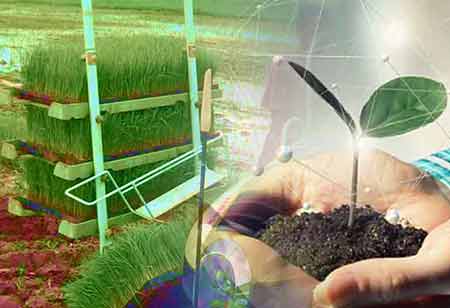Thank you for Subscribing to Agri Business Review Weekly Brief
Impacts of Technological Advancements on Precision Agriculture
With the advantage of managing crops at a spatial scale, precision agriculture is also known as site-specific management.

By
Agri Business Review | Monday, May 09, 2022
Stay ahead of the industry with exclusive feature stories on the top companies, expert insights and the latest news delivered straight to your inbox. Subscribe today.
By utilising a variety of technologies to increase productivity, precision agriculture is expanding the range of potential for farming.
FREMONT, CA: Precision agriculture is an efficacious method that has various potential for raising profitability while minimising the harmful consequences of farming on the environment. This is achieved by carefully coordinating the use of agricultural inputs like herbicides, water, and fertilisers with the detection of actual conditions in particular fields.
With the advantage of managing crops at a spatial scale, precision agriculture is also known as site-specific management. Crop condition variances can occur under various situations ranging from one part to another. But precision farming helps the farmer save money, reduce harmful environmental consequences, and increase yields by adjusting input levels and management procedures in accordance with the suitable farm demands for the specific local conditions.
Recent studies have observed that precision agriculture is anticipated to increase food resilience while also ensuring sustainability and job maintenance. It uses technology to increase the proportion of agricultural inputs such as water, fertiliser, land, energy, and pesticides to agricultural output, that is food. Sensors are used in precision agriculture to accurately determine the demands of crops or livestock. It helps the farmer calculate methods to maximise the output of each animal or plant while minimising resource waste.
As there is an expectation of global population growth in the coming years, there is a high demand for farmers to accelerate productivity to cover the current deficit and meet their needs. Emerging technologies will play a crucial role in accomplishing this goal. Since precision agriculture offers ways to increase outputs with minimum inputs, it is believed to be able to support a growing population despite falling yields and arable land. For instance, a sensor-based monitoring system provides the farmer with greater information since they receive precise production projections and early warnings on crop status.
Another significant capability of precision agriculture is to alleviate the sector‘s detrimental effects on the environment. Statistics show that at least 10 per cent of the global greenhouse gas emissions come from agriculture. Additionally, excessive fertiliser and pesticide usage, as well as soil erosion, raise issues for the atmosphere in general. Therefore, precision agriculture is indeed assisting in reducing these concerns. It uses a wide range of technologies to achieve these objectives.
• Automated Steering Systems: It helps in performing particular driving tasks like auto-steering and overhead turning from one end of a row to the start of the next one and prevents overlapping of fertiliser and pesticide. Auto steering systems reduce human error and accidents and also aid in the efficient site and soil management.
• Geo-mapping: It is a technology used to create maps that highlight quantitative data of interest, such as soil properties and nutrient levels for specific areas.
• Remote Sensing: This is used to collect data remotely from a distance to evaluate the crop and soil health and measure parameters such as nutrients, moisture, compaction, light, and various crop diseases.
• Agricultural Robots: Robots are expected to perform tasks autonomously in the future which will be a huge contribution to sustainability. This will reduce soil compaction caused by heavy machines operating on the soil, thereby requiring less labour and resources. These tools are of higher value since they produce valuable output.





